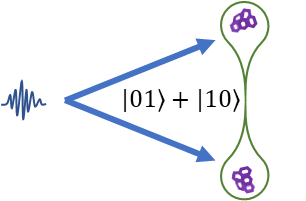Much is being written about the current state of affairs in fundamental physics. To summarize (for those not familiar with this state of affairs), there has been very little progress in fundamental physics for several decades. Perhaps the main reason for that is the fact that it becomes increasingly difficult to make experimental observations at higher energies. Perhaps we are facing the end of fundamental physics as a scientific field of study.
(One curious fact is that we have ample experimental results pointing to neutrinos having mass and yet, as far as I know, we still do not have a modified standard model that includes masses for the neutrinos. What’s up with that?)
However, there are other reasons for the current state of affairs. The theoretical landscape is being dominated by a dead theory. Obviously, this is an extremely unhealthy situation. It stands in the way of progress at a critical time in the development of humanity’s understanding of the universe we life in. What boggles one’s mind is the extent to which proponents of this dead theory will go to prop up their dead horse.
I heard that these proponents are using their influence to arrange interviews in which they claim that there is nothing wrong with their theory and that they are making remarkable progress. In the meantime, the theory is unable to make any testable predictions with no foreseeable prospect of ever being able to do so.
So I ask myself, why would people do such a deceitful thing to mislead the public? I guess one needs to put yourself in the shoes of such a person. He or she has spent a lifetime working on a theory, have succeeded in making this theory the only one being taken seriously, have secured lots of funding to work on it, and have convinced many young people to invest their careers in this theory. It is virtually impossible for such a person to turn around and admit that the theory failed.
So what can we do now? How will we get out of this mess? Do we need to wait until these proponents pass away? (Some of them are very old by now.) Unfortunately, they have enlisted so many young people that it would be difficult to stop the momentum built up in this process.
My advise is to make funding organizations accountable for this mess. These funding organizations have been funding this failed theory for decades despite the complete lack of experimental support. The fact that this theory will never be able to make predictions that can be tested is widely known. Therefore, the funding provided for this dead theory by these funding organizations is basically flying in the face of science. I think it is time that the public and the governments take these funding organizations to task about this situation. The funding for the dead theory simply needs to stop. It is not difficult to compile some reasonable funding criteria to make sure that such dead theories don’t keep on reaping in the lion’s share of research funding.


